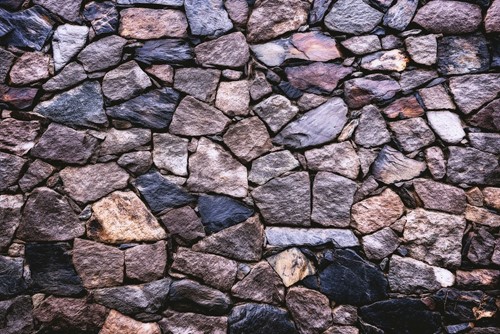
Natural stone siding is not always the best choice. Depending on your budget and the climate where you live it might be wise to choose an alternative. But what if you have your heart set on the look of a stone house? There are lots of material options for home exteriors on the market today including some excellent imitation stone varieties. Here we will go over the three most popular and readily available alternatives to natural stone.
Manufactured stone, also called cultured stone, is actually cement poured into molds to imitate the texture and shape of natural stone. One thing that makes manufactured stone such a great option is that cement shares some of the same non-aesthetic benefits as natural stone. Cement is extremely durable and resistant to extreme weather and fire. It’s a fairly good insulator and will last the entire life of your home without need for regular maintenance. It’s lighter than stone which makes it more convenient and easy both to transport and install. Because it’s made in specialized molds, it’s also easy to get the exact size and shape of slab or siding components with very little waste.
Manufactured stone essentially allows you to enjoy the benefits of stone without the higher price. You can even purchase manufactured stone directly and install it on your own rather than need to hire a professional mason. There are also lots of companies out there who specialize in the creation and installation of manufactured stone, usually with a variety of colors, textures and finishes to choose from.
Stone veneer siding is sold in panels that fit together like puzzle pieces. They are lightweight and inexpensive but are actually made with real natural stone—just a lot less of it. This option is a great compromise for those with their hearts set on using natural stone because it essentially adds a mask of natural stone to the home that doesn’t require mortar or masons. You can buy stone veneer kits or individual panels at your local hardware or home improvement store and install them yourself in a single weekend. The wide variety of colors, patterns and textures available is staggering—you will certainly be able to mimic the natural stone vision in your imagination without the hassle or high price tag. It’s also perfect for adding stone as an accent rather than covering the entire house because you only need to buy what you need.
Stone veneer is extremely convenient but has some drawbacks. By nature of being mass-produced, stone veneer panels lack the same character present in natural stone. You are not likely to get the same levels of variation and may even find pieces that look identical. Another issue with stone veneer is that if the seams are not precise or the panels not installed correctly moisture can get in between them and potentially lead to mold issues and other water damage.
Faux stone is usually made of polyurethane-based foam. You can purchase and install it in panels similar to stone veneer or even cut it to size with a handsaw. Each panel only weighs a few pounds and can apply to surfaces with glue. The truly brilliant thing about faux stone is how real it looks. It does not feel like stone when you touch it, but the technology used to mimic the textures of different varieties of stone is so advanced it’s highly believable.
Faux stone is the lightest of your natural stone alternatives and the least durable. The foam layer is covered in a protective plastic coating to prevent damage and keep out moisture, but cannot withstand impact. This means that in a hail storm you might end up with dents or even tears in the panels. If you want to install it indoors you must confirm it is safe to install on or around fireplaces, as not all varieties of faux stone are flame and heat resistant.
The best thing about all the above options is that they are easily accessible to purchase and research. Some stores and suppliers even offer in-depth tutorials for self-installation to help you save money and time. If you want the look of natural stone without buying the real thing, any of these options are excellent alternatives.